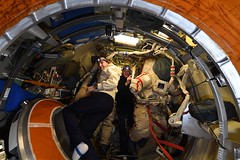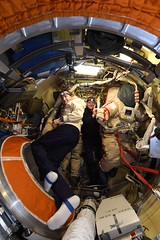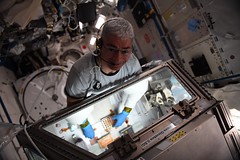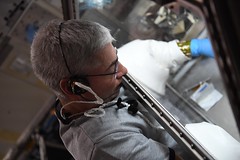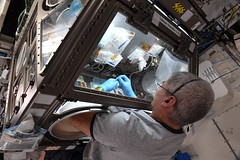Oleg and Pjotr
samedi 29 mai 2021 à 13:41Thomas Pesquet posted a photo:
A large part of the International Space Station is made in Russia and Oleg en Pjotr are preparing for a spacewalk on Wednesday. They use Orlan suits that are different from the white EMU suits I have trained on and use – but they serve the same purpose to keep us alive with oxygen, a comfortable temperature and protect us from the vacuum of space, all while being able to work. I trained in them a while ago with Andreas Mogensen and we agreed that they are reliable and comfy (and the back entry is convenient). Oleg and Pjotr are set to leave us for a few hours and head outside to prepare the Pirs module for a new arrival later in the Summer: the MLM (Nauka) laboratory.
La Station a une grande partie made in Russia ! En ce moment les 2 membres d’équipages russes :ru: préparent leur prochaine sortie en scaphandre, avec le modèle Orlan. 55 sorties ont été réalisées du côté russe avec ce système d’une grande fiabilité. Elles sont un peu différentes des combinaisons EMU de la NASA avec lesquelles j’ai réalisé mes deux sorties durant Proxima. Néanmoins l'objectif est le même : protéger l'astronaute du vide et des températures extrêmes et lui permettre de travailler dans des conditions à peu près confortables. Oleg et Pjotr nous quitteront quelques heures mercredi : ils doivent préparer le module Pirs pour l'arrivée du tout dernier module de l’ISS cet été, le laboratoire Nauka.
Credits: ESA/NASA–T. Pesquet
607C2960
